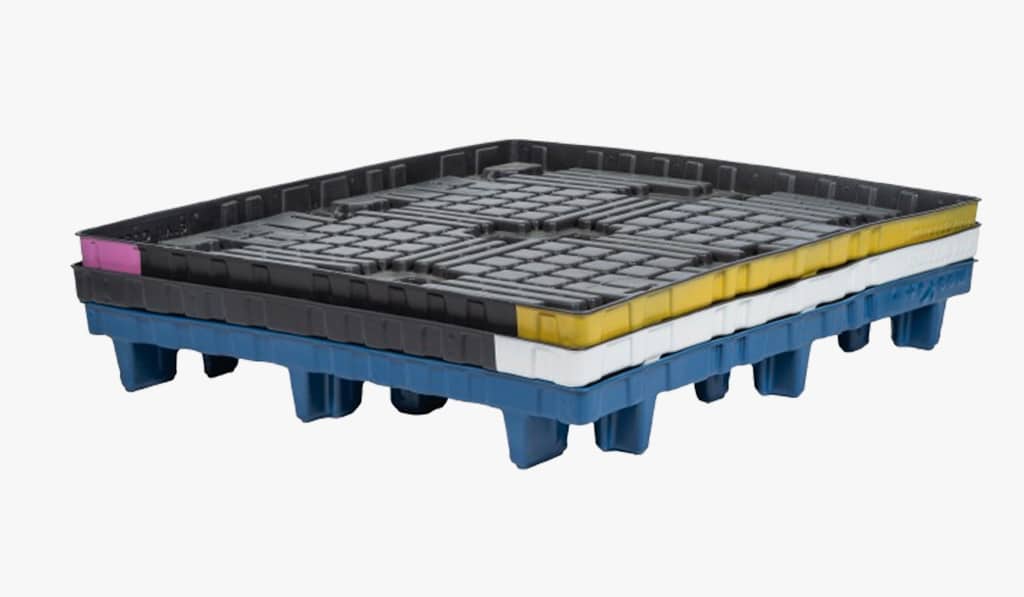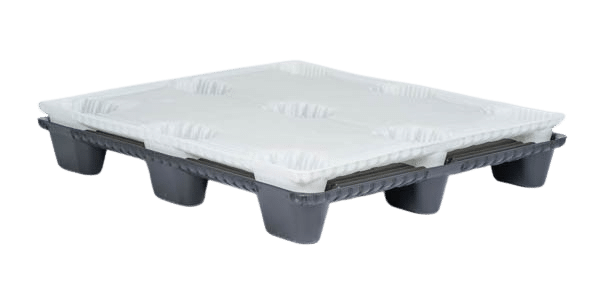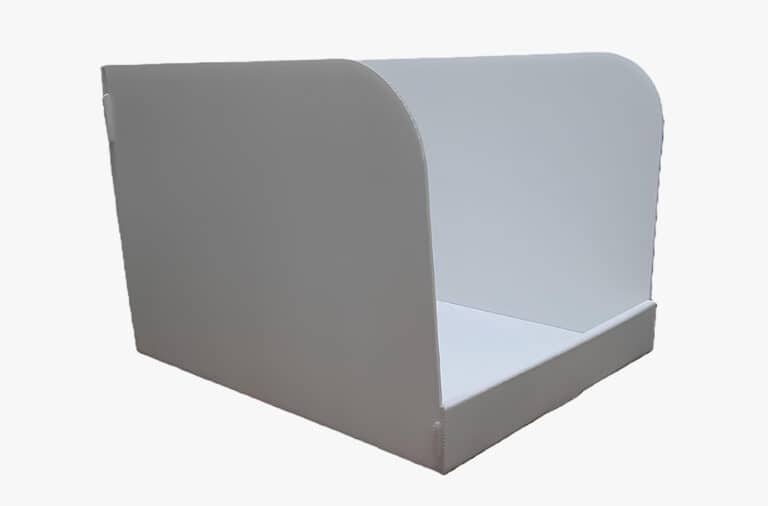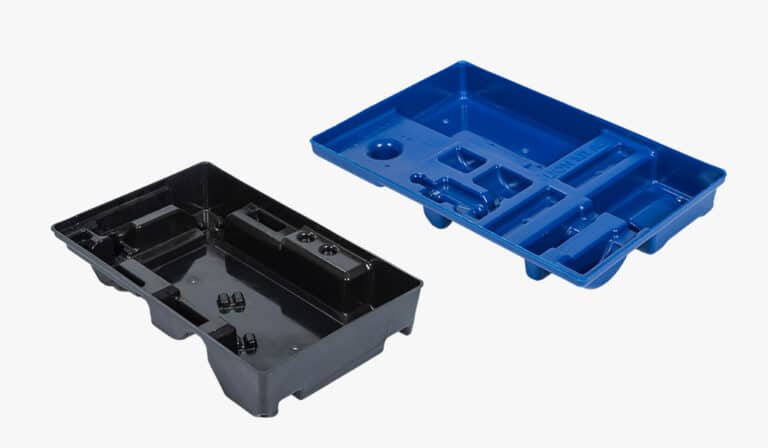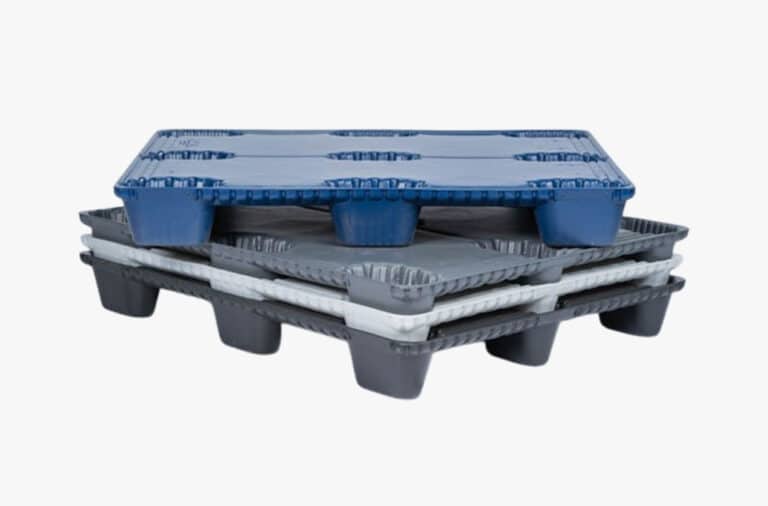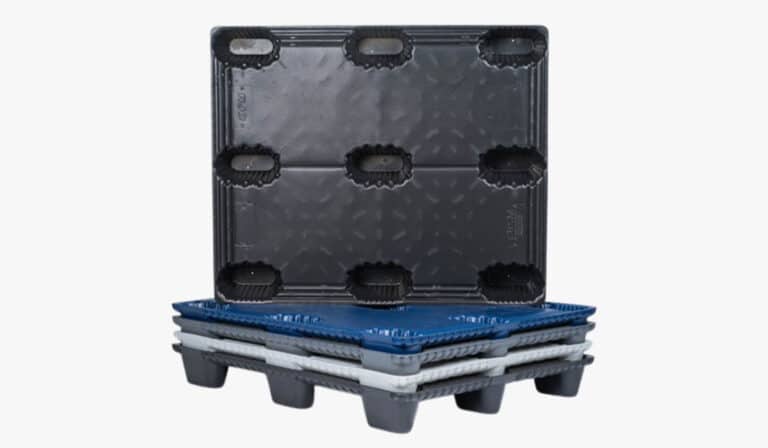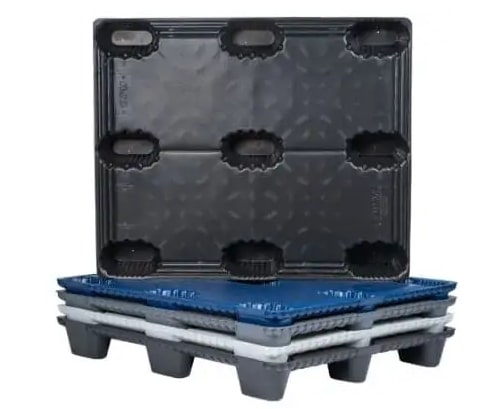Optimizing industrial logistics with plastic pallets: efficiency, durability and hygiene in palletizing loads
When it comes to handling loads, the plastic pallet is a widely used option in various industrial sectors, from manufacturing to commerce and logistics.
Choosing the right model not only affects the safety of the product during transportation, but also the efficiency of the operation, the cost and the durability of the solutions adopted.
Plastic pallets offer significant advantages compared to wooden pallets, such as resistance to biological and chemical agents, ease of cleaning and a longer service life.
Selecting the right pallet therefore depends on a careful analysis of the needs of the operation, the type of cargo to be transported and the storage requirements.
With a wide range of pallet type options available, understanding their characteristics and how they apply to different logistical situations is essential.
Below, we'll discuss the most common options, their advantages and how to choose the right model for each operation.
Types of plastic pallets: which one to choose?
The variety of plastic pallet types available on the market can leave any logistics manager wondering which model to choose.
The decision must take into account the weight of the loads, the type of handling and the environmental conditions. Here are some of the main types of plastic pallets and their applications.
Pallets for light, medium and heavy loads
Plastic pallets vary in load capacity, which makes them suitable for different types of operations.
For light loads, such as cardboard boxes and small products, a plastic pallet with a smaller capacity, such as the DC 0812 models, may be sufficient. These pallets are light, easy to handle and have good stacking characteristics.
For medium loads, such as sturdier and heavier items, the DC 1012 or DC 1212 pallet are more suitable options.
With the capacity to support dynamic loads of up to 1,200 kg and static loads of 2,800 kg, these models are ideal for transporting medium-sized materials safely and efficiently.
For heavy loads, such as large machinery or equipment, pallets like the DC 1416 stand out, as they can support up to 800 kg in dynamic movement and 2,600 kg in static loading, guaranteeing robustness and resistance in more demanding operations.
Hollow and closed pallets: differences and applications
Hollow pallets are characterized by the absence of a solid lid and are often used for loads that need ventilation, such as food or agricultural products.
This design favors air circulation and liquid drainage, preventing the accumulation of water or humidity.
Closed pallets, on the other hand, offer a continuous, solid surface that provides greater stability and security for loads that require uniform support. This type of pallet is ideal for heavy or fragile loads, which can be damaged by uneven movement.
Both models have their applications depending on the conditions of the product being transported, and it is important to assess the specific needs for ventilation or cargo protection.
Returnable and disposable pallets: which is best?
The choice between returnable and disposable pallets depends on the company's logistical needs and economic viability.
Returnable pallets are designed to be reused several times, which reduces long-term costs and minimizes waste. They are an excellent option for long-term operations and for companies looking for more sustainable solutions.
On the other hand, disposable pallets are ideal for short-term operations, where lower initial costs are a priority. Because they are cheaper, these types are often used in sectors that don't need to reuse them.
Both types have their advantages, and the choice between one and the other depends on the product's life cycle and the company's logistics preferences.
Pallet models and their applications
Plastic pallet models vary widely in design and functionality, allowing companies to choose the best option for their specific needs. Let's take a look at the differences between the models and their main applications.
Pallets with edges and without edges: advantages and disadvantages
Pallets with edges are especially useful when you want to prevent items from slipping during transportation. These edges offer greater security for transporting items such as cardboard boxes and products that may not remain stable.
The downside is that this design takes up more space during storage and may not be ideal in high-stacking situations.
On the other hand, pallets without edges are more economical in terms of storage, as they can be easily stacked more compactly.
However, they offer less protection against load slippage, which can be a limiting factor depending on the type of product being transported.
Stackable and nestable pallets: which is the best option?
Stackable pallets allow loads to be organized vertically, optimizing space during transport and storage.
This aspect is very useful in warehouses with limited space, as the possibility of stacking makes it easier to maximize the use of space.
Nestable pallets, on the other hand, are designed to fit together, making even more efficient use of space. This makes nestable pallets ideal for transportation and storage in large quantities.
The choice between these two types of pallets depends on the type of palletizing and the space available. Both models offer efficient storage solutions, but nesting provides even greater space savings.
Applications of the different models in industry and commerce
Plastic pallet models are used in various industries and commercial sectors. In the food sector, for example, plastic pallets with drainage holes are ideal for perishable products such as fruit and vegetables, which require ventilation.
In the consumer goods sector, pallets with edges may be necessary to ensure the safe transportation of more fragile items.
In the pharmaceutical industry, plastic pallets are used due to their ease of cleaning and resistance to contamination, while in the automotive sector, more robust models are used to transport heavy parts and components safely.
Dimensions and measurements of plastic pallets
The dimensions of plastic pallets vary according to the type of load and the desired application.
Sizes can be customized to meet specific customer needs, but the most common options include pallets with dimensions of 800 x 1,200 mm, 1,000 x 1,200 mm and 1,200 x 1,200 mm.
These dimensions are designed to fit the transportation and storage requirements of different products.
Pallet sizes should be chosen based on the type of load, the weight capacity required and the stacking capacity.
The larger the pallet, the greater the load that can be accommodated, but also the greater the space needed for storage.
Conclusion
Choosing the right plastic pallet for each operation is fundamental to ensuring efficiency, safety and sustainability in logistics operations.
By understanding the differences between pallet types, their models, dimensions and measurements, you can optimize your palletizing processes and improve your stock management.
With options ranging from pallets for light loads to high-strength models for heavy loads, PLM's plastic solutions are proving to be increasingly efficient and economical in the industrial world, providing safer and more hygienic transportation, as well as offering durability and sustainability.

